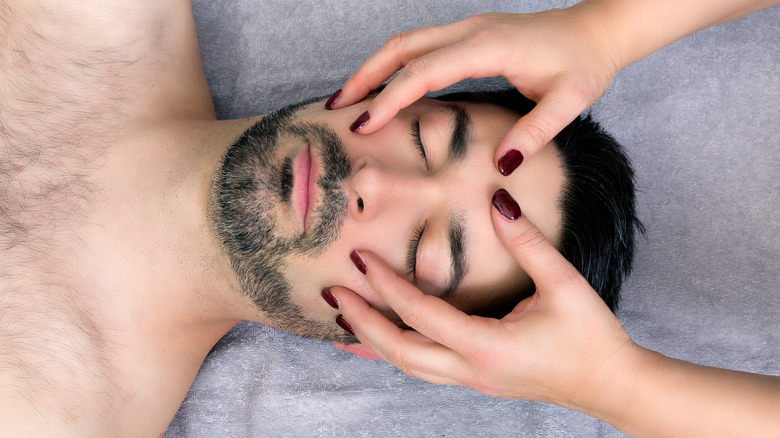

If you have ever been to a chiropractor or massage therapist, you may have experienced craniosacral therapy (CST). However, if this sounds alien to you, and you live with chronic migraines, neck pain, neuralgia, or even are suffering with side effects from cancer treatments, CST may be worth exploring.
The gentle, non-invasive technique has been used as a form of healing and can be dated back to the 1800s, when Dr. Andrew Taylor founded The American School of Osteopathy in Kirksville Missouri, later known as the Kirksville College of Osteopathic Medicine (via ATSU). Although John E. Upledger, a doctor of osteopathy, is credited with developing the technique in the 1970s (via Irish Association of Craniosacral Therapists).
Considered an alternative form of medicine, CST is often used by chiropractors, massage therapists, and osteopaths (per Medical News Today). The Cleveland Clinic describes CST as similar to massage therapy, as most sessions are accompanied by low lighting, soft music, and even aromatherapy to help you fall deeper into relaxation.
Craniosacral therapy may help with pain

During the CST session, the provider will use gentle pressure on the head, neck, and back to relieve pain caused by compression, and to help the flow of cerebrospinal fluid in the central nervous system to become normalized (via Healthline). Many people may benefit from three to 10 sessions of the treatment by a licensed professional. Much like chiropractic care, the theory behind CST is that the better the flow of the spinal fluid, the less pain a person will feel and the easier it will be for the body to heal.
The light touch therapy has been associated with treating both physical and psychological conditions, and, according to the Upledger Institute International, “CST is increasingly used as a preventive health measure for its ability to bolster resistance to disease.” Craniosacral therapy has been used to treat conditions such as chronic pain, autism, central nervous system disorders, chronic fatigue, fibromyalgia, PTSD, and stress (per Medical News Today).
Source: Read Full Article